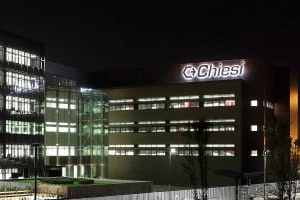
The European Medicines Agency has backed the continent’s first ever stem cell-derived therapy for patients with damaged eyes for approval – although its recommendation is conditional.
Chiesi’s Holoclar (an ex-vivo expanded autologous human corneal epithelial cells containing stem cells), is recommended for moderate to severe limbal stem cell deficiency (LSCD) due to physical or chemical burns to the eye(s) in adults.
It is the first medicine recommended for LSCD, a rare eye condition that can result in blindness. The EMA has previously given the medicine orphan drug status, extending its patent life in Europe (although it may find itself immune to attempts to copy it).
The recommendation by EMA advisors the Committee for Medicinal Products for Human Use (CHMP) was itself based on an assessment carried out by the Committee for Advanced Therapies (CAT), the EMA’s expert committee for advanced therapy medicinal product (ATMPs).
But even though the CAT and the CHMP both believe this drug to be safe and effective, they both suggested that it be approved under a conditional marketing authorisation.
This is Chiesi’s submission data was based on retrospective studies, and is not yet comprehensive – although it did still show that the medicine’s benefits outweigh its risks.
However, the EMA said an additional study on the use of Holoclar should be conducted before a full licence can be issued. In the meantime the EMA recommendation puts Holoclar on course for full European approval within the next three months.
Despite the limitations in the drug’s conditional recommendation it still represents a significant step for both Chiesi and the Agency. Enrica Alteri, head of the EMA’s human medicines evaluation division, explains: “This recommendation represents a major step forward in delivering new and innovative medicines to patients.
“EMA has used all available support tools to facilitate the development and assessment of Holoclar. It is an advanced therapy medicinal product that has been designated as an orphan medicine. This allowed the Agency to provide support including several rounds of free scientific advice to the applicant during Holoclar’s development.”
Living tissue
Stem cells can act as a repair system for the body and limbal stem cells are located in the eye at the border between the cornea (clear front part of the eye) and the sclera (white of the eye).
These cells are important for regenerating and healing damage to the outer layer of the cornea (corneal epithelium). Physical or chemical burns can cause loss of these stem cells, resulting in LSCD, a condition that is estimated to affect just 3.3 out of 100,000 people in the European Union.
Holoclar is a living tissue equivalent intended to be transplanted in the affected eye (or eyes) after removal of the altered corneal epithelium. It is made from a biopsy taken from a small undamaged area (minimum of 1-2 mm2) of the patient’s cornea and grown in the laboratory using cell culture.
Holoclar can offer an alternative to transplantation for replacing altered corneal epithelium in some cases, and it has been shown to increase the chances of a successful corneal transplant where the injury has caused extensive eye damage.
It also reduces the risk of rejection compared with transplanting tissue from a donor and does not require surgery on the patient’s other eye as only a small biopsy is performed to collect the cells, thus reducing the risk of damage to the healthy eye.
Because of this, Holoclar may also be suitable where both eyes are affected by moderate to severe LSCD, according to the EMA.
The final decision now falls to the European Commission, meaning it should be on the market by March 2015.




